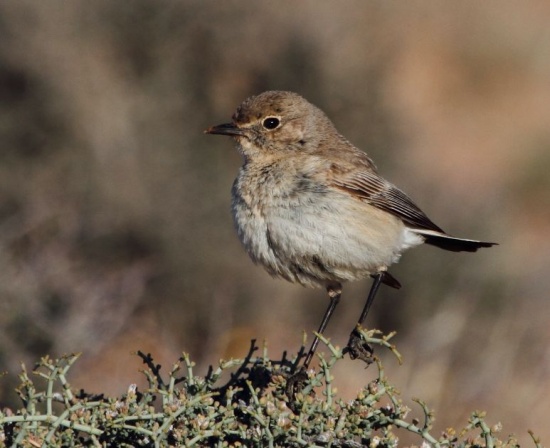(Taxonomy) |
m (→Taxonomy) |
||
| Line 12: | Line 12: | ||
There are five subspecies:<sup>[[#References|[1]]]</sup> | There are five subspecies:<sup>[[#References|[1]]]</sup> | ||
| − | ''C. t. hoeschi'' | + | *''C. t. hoeschi'' |
:*Coastal deserts of south-western Angola and north-western Namibia | :*Coastal deserts of south-western Angola and north-western Namibia | ||
| − | ''C. t. albicans'' | + | *''C. t. albicans'' |
:*Coastal northern Namibia (western Damaraland and northern Great Namaqualand) | :*Coastal northern Namibia (western Damaraland and northern Great Namaqualand) | ||
| − | ''C. t. barlowi'' | + | *''C. t. barlowi'' |
:*Namibia (central and southern Great Namaqualand) | :*Namibia (central and southern Great Namaqualand) | ||
| − | ''C. t. nebulosa'' | + | *''C. t. nebulosa'' |
:*Coastal sand dunes of south-western Namibia and western South Africa | :*Coastal sand dunes of south-western Namibia and western South Africa | ||
| − | ''C. t. tractrac'' | + | *''C. t. tractrac'' |
:*South Africa (Karoo to Aliwal) | :*South Africa (Karoo to Aliwal) | ||
| + | |||
==Habitat== | ==Habitat== | ||
Desert scrub, hummock dunes and gravel plains. | Desert scrub, hummock dunes and gravel plains. | ||
Revision as of 18:37, 11 November 2011
- Cercomela tractrac
Identification
14-15 cm. White tail with a dark inverted “T” at the tip, black short straight bill, black legs and feet, dark eye.
The Namib form found on hummock dunes and at the coast has almost white plumage with grey wings and grey tail marking. The south-eastern form, found in gravel plains has brown upperparts with blackish flight feathers and tail markings. Its underparts are white. The sexes are similar, but the juvenile is more mottled than the adult.
Distribution
Angola, western Namibia and western South Africa.
Taxonomy
Placed in genus Emarginata by Gill and Donsker.[2]
There are five subspecies:[1]
- C. t. hoeschi
- Coastal deserts of south-western Angola and north-western Namibia
- C. t. albicans
- Coastal northern Namibia (western Damaraland and northern Great Namaqualand)
- C. t. barlowi
- Namibia (central and southern Great Namaqualand)
- C. t. nebulosa
- Coastal sand dunes of south-western Namibia and western South Africa
- C. t. tractrac
- South Africa (Karoo to Aliwal)
Habitat
Desert scrub, hummock dunes and gravel plains.
Behaviour
It builds a cup-shaped nest of straw and leaves on the ground, usually under a bush or shrub. 2-3 red eggs are laid. This species is monogamous, mating for life.
The diet includes butterflies, bees, wasps, locusts and ants. Prey is typically taken in a short flight.
References
- Clements, JF. 2011. The Clements Checklist of Birds of the World. 6th ed., with updates to August 2011. Ithaca: Cornell Univ. Press. ISBN 978-0801445019. Spreadsheet available at http://www.birds.cornell.edu/clementschecklist/downloadable-clements-checklist
- Gill, F and D Donsker (Eds). 2011. IOC World Bird Names (version 2.10). Available at http://www.worldbirdnames.org/.
Recommended Citation
- BirdForum Opus contributors. (2024) Tractrac Chat. In: BirdForum, the forum for wild birds and birding. Retrieved 28 April 2024 from https://www.birdforum.net/opus/Tractrac_Chat




